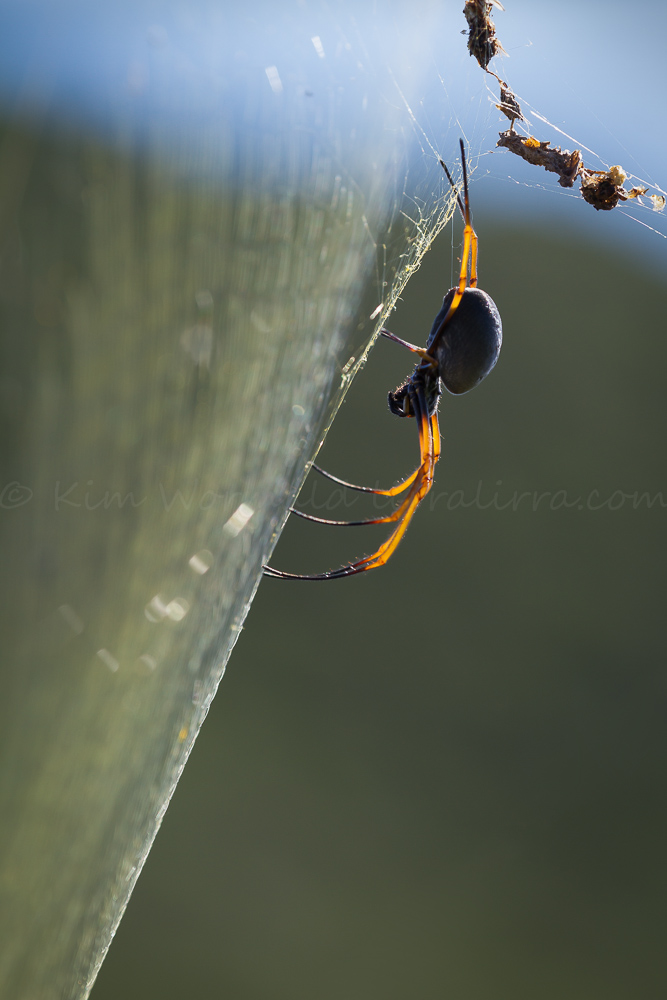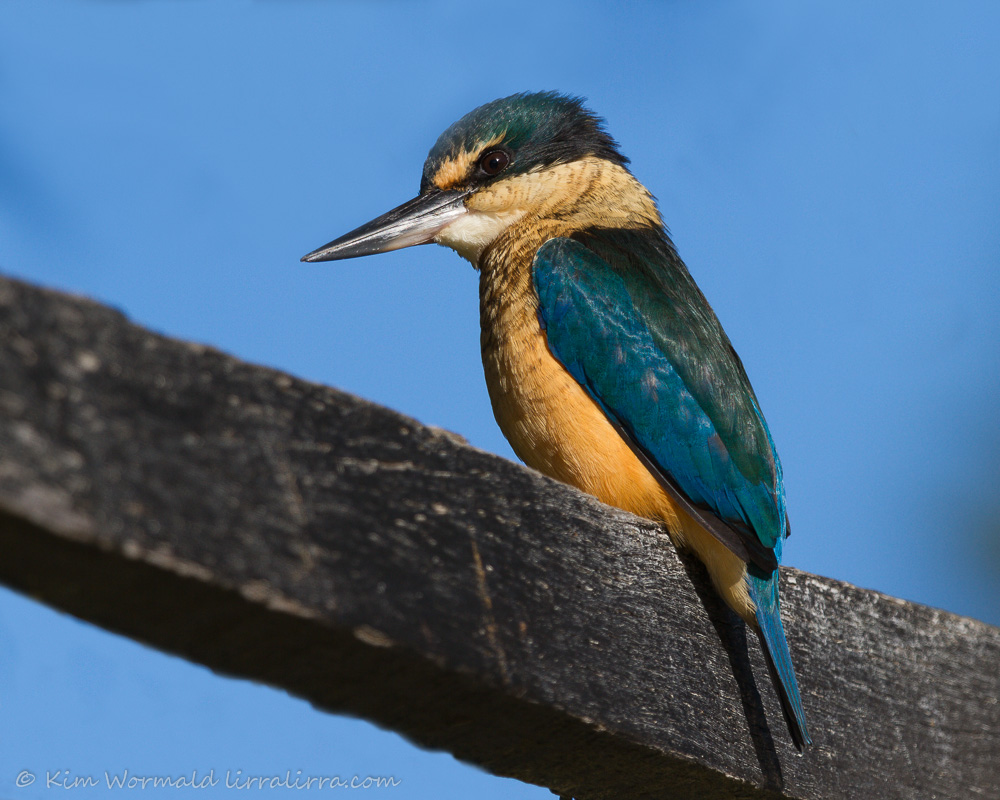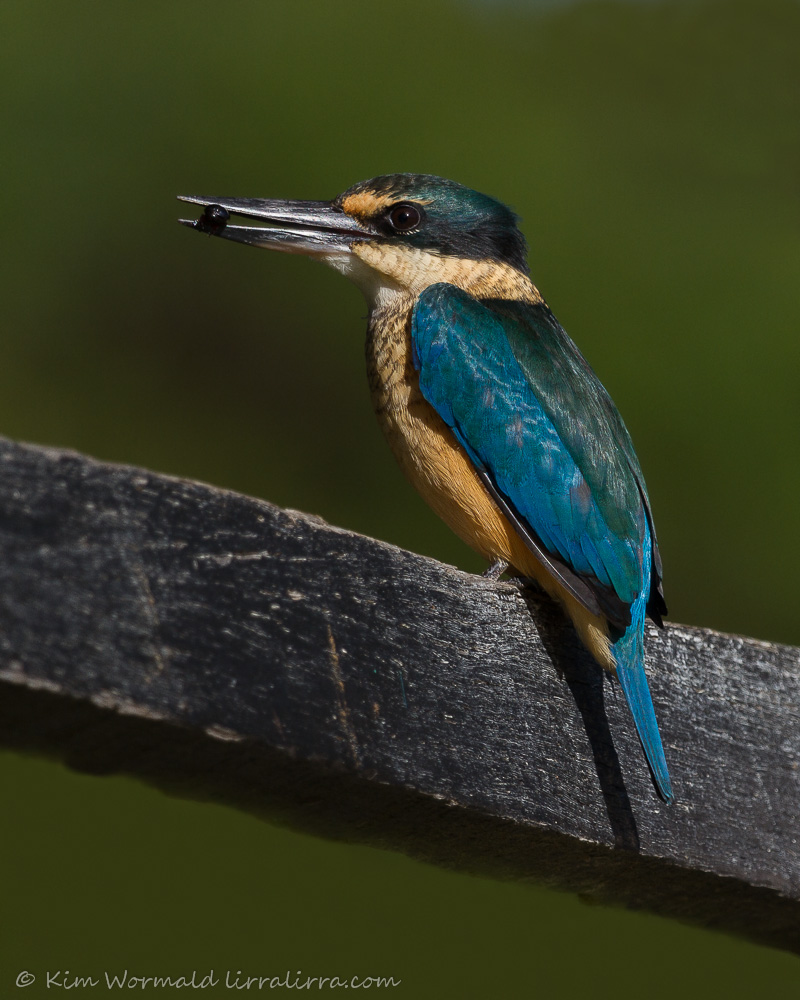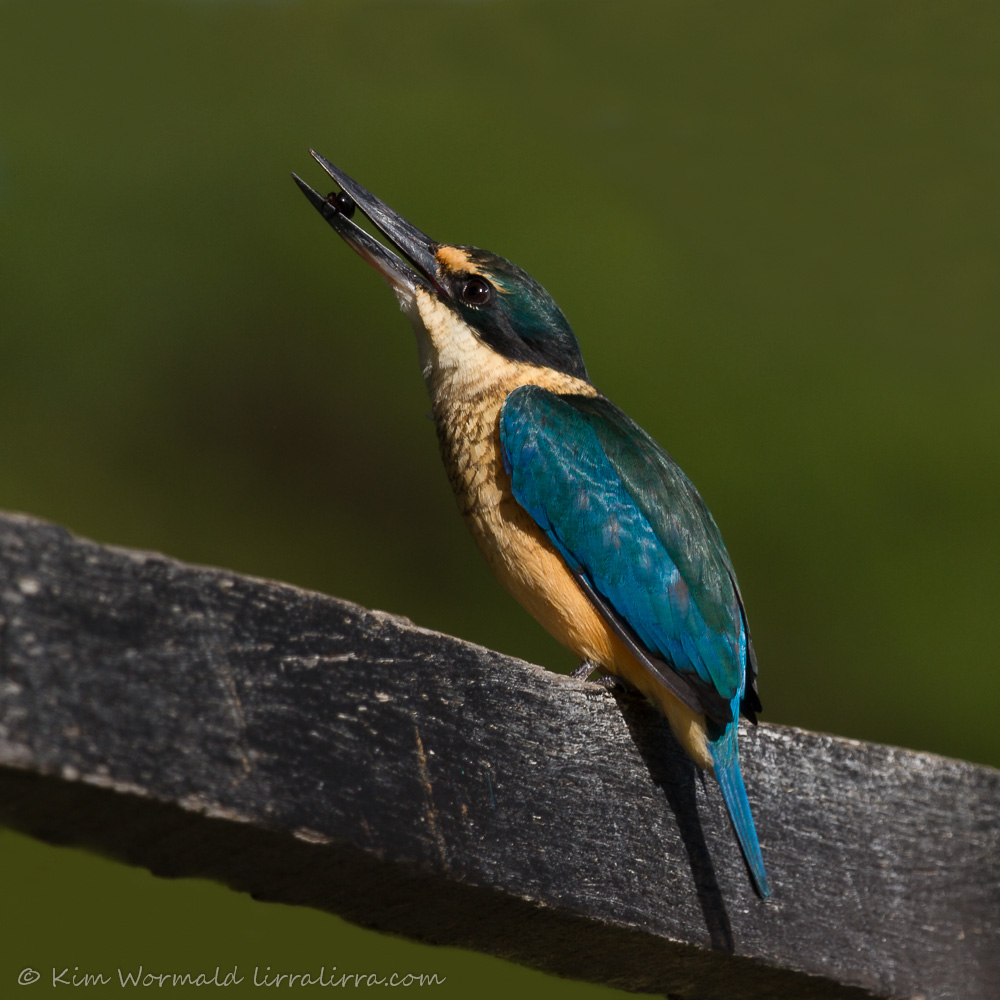If I could wriggle my nose and be back on Lord Howe Island I’d be there now, hiking up hillside tracks with my camera at the ready and preferably with someone tall in front of me to take out the ubiquitous spiders’ webs. If you’re not keen on spiders please skip the first image, the kingfisher is beautiful!
Golden Orb-weaving Spiders aren’t birds but they are spectacular and massive. In fact they are spectacularly massive with bodies that are several centimeters long and webs that are about one metre across. I was surprised that the Lord Howe Currawongs don’t feast on them, perhaps they taste unpleasant, or perhaps they do eat them and there’d be even more spiders if not for the currawongs.
 Golden Orb-weaving Spider (Nephila plumipes)
Golden Orb-weaving Spider (Nephila plumipes)
Canon 7D, 100-400mm L IS USM, 1/200, f/7.1, exposure compensation +1/3, ISO 100, focal length 275mm
The “golden” in Golden Orb-weaving Spider relates to the golden sheen of their webs, which can be seen in the image above. Also visible are the contents of the spider’s pantry, or possibly the remnants of previous meals. The spider in the image is female, the males are very tiny in comparison.
Sacred Kingfishers are abundant on the island and could be seen on fence posts near the airport, driftwood at the beach, distant verandah railings, beach-side trees and around the tennis court. Sometimes I’d be alerted to their presence by their high-pitched “kek kek kek kek kek” call, other times I’d see one swoop onto prey and watch it return to its perch. I was constantly scanning potential perches and soon found some favourites.
 Sacred Kingfisher (Todiramphus sanctus)
Sacred Kingfisher (Todiramphus sanctus)
Canon 7D, 100-400mm L IS USM, 1/640, f/5.6, ISO 100, focal length 400mm
Sacred Kingfishers are beautifully coloured and look magnificent when the sunlight shines on them early in the morning or just before sunset. They stare intently at the ground, rarely at water, from a relatively low perch as they look for large insects and small reptiles.
 Sacred Kingfisher (Todiramphus sanctus)
Sacred Kingfisher (Todiramphus sanctus)
Canon 7D, 100-400mm L IS USM, 1/500, f/5.6, ISO 100, exposure compensation -1/3, focal length 400mm
The kingfisher spotted this beetle amongst the grass at the remarkable distance of 15 metres before swooping down to catch it in its bill and returning to the perch.
 Sacred Kingfisher (Todiramphus sanctus)
Sacred Kingfisher (Todiramphus sanctus)
Canon 7D, 100-400mm, 1/500, f/5.6, ISO 100, exposure compensation -1/3, focal length 400mm
Kingfishers, and other long-billed birds, often take a while to get their prey from the end of their bills into a position suitable for swallowing. It took the Sacred Kingfisher, above, quite a while to manoeuvre the poor beetle before swallowing it.
Sacred Kingfishers measure about 21cm and weigh about 45g. They are medium-sized kingfishers with stunning turquoise, green, blue, buff and white colouring. I’m just learning about post-processing options and may be able to improve these images by moving the shadows or blacks sliders, or by tweaking some other buttons that I haven’t yet learned about – I’ll keep you posted.
Happy birding, Kim
PS It is now possible to get a weekly email letting you know that lirralirra has been updated – just add your address to the ‘Subscribe to email’ box, above right.
Also, I recently added a Facebook ‘like’ option. Thanks to all ‘likers’ – I like you too!

Kim,
I used to bump into spider webs in Florida too and after being startled I would laugh at myself.
The Kingfisher is gorgeous and your images show their beauty well!
It’s good to laugh about it, Mia, I agree. It’s pretty amazing that spiders can ‘catch’ us in their webs, imagine if we could create something that strong every day.
Hi Kim…
Beautiful Kingfishers….lovely and sharp, your usual attention to detail shows in the finished photo.
Carole
Thank you for your lovely comment Carole
hi kim
very nice post with very good picturs and explication
i m suprise to see kingfisher adapted for insects, where i am, i can watch european kingfishers, but they catch fish, never seen something else
your email notification works very well, now i can t miss anything in your blog lol
have a nice day ☼
Hi Eric, it’s interesting about Sacred Kingfishers being adapted to insects, I hadn’t thought much about it. I wonder if it’s due to adapting to long periods of drought. Forest and Azure Kingfishers hunt in water, Azures are most like European kingfishers. I’m glad the email notification is working, you have a nice day too!